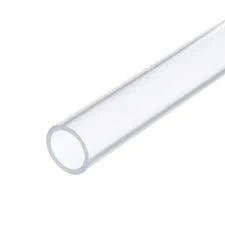okt. . 18, 2024 15:49 Back to list
hdpe pipe coupling
Understanding HDPE Pipe Couplings
High-Density Polyethylene (HDPE) pipes are widely recognized for their durability, flexibility, and resistance to corrosion and chemicals. One critical component in HDPE piping systems is the pipe coupling, which plays a vital role in connecting various segments of HDPE pipes to ensure a seamless flow and maintain the integrity of the system. In this article, we will explore the significance, types, and installation methods of HDPE pipe couplings.
Significance of HDPE Pipe Couplings
HDPE pipe couplings are essential for various applications, including water supply, sewage, gas distribution, and industrial operations. They allow for the extension or alteration of existing pipelines without requiring extensive excavation or the replacement of entire sections. By providing a secure and leak-proof connection between pipe segments, couplings help minimize downtime and maintenance costs. Furthermore, their lightweight nature makes installation easier, contributing to overall project efficiency.
Types of HDPE Pipe Couplings
There are several types of couplings used in HDPE piping systems, each designed to meet specific requirements
1. Compression Couplings Often used for temporary connections or for connecting pipes of different diameters. They offer a quick installation that requires minimal tools.
2. Electrofusion Couplings These couplings feature built-in heating elements that melt the pipe and coupling when an electric current is applied, creating a strong, fused connection. This method is ideal for permanent connections.
3. Butt Fusion Couplings In this technique, the ends of two HDPE pipes are heated until they soften and then pressed together to form a single piece. This method is efficient for long-term usage and is often preferred in high-stress environments.
hdpe pipe coupling

4. Mechanical Couplings These are typically used when flexibility and adjustment are necessary. They consist of a rubber gasket and a clamp that securely holds the two pipe ends together.
Installation of HDPE Pipe Couplings
Proper installation of HDPE couplings is crucial for ensuring a leak-free system. The installation process may vary depending on the type of coupling used
- For compression couplings, the installation involves simply sliding the coupling over the ends of the pipes and tightening the screws to secure the connection.
- Electrofusion requires precise alignment of the pipes, followed by initiating the electrofusion process, ensuring sufficient time for cooling before applying pressure.
- In butt fusion, the ends of the pipes are aligned, heated, and then pressed together. It's essential to monitor the heating time and pressure to achieve a strong bond.
- For mechanical couplings, the gasket must be positioned correctly, and the clamps tightened to create a watertight seal.
In conclusion, HDPE pipe couplings are integral to the efficiency and longevity of HDPE piping systems. Understanding the types of couplings available and following proper installation techniques ensures reliable performance in various applications. As infrastructure requirements continue to evolve, the demand for effective and durable coupling solutions will undoubtedly grow, making HDPE couplings a key focus in the construction and plumbing industries.
-
PVC Transparent Sheet Roll - Durable & Flexible PVC Plastic Sheet Roll for Industrial & Home Use
NewsJun.24,2025
-
High-Quality PVC PPR Pipes and Fittings Durable ERA PPR Solutions
NewsJun.10,2025
-
High-Quality Large HDPE Sheets & Large Diameter PVC Pipe Durable Large PVC Pipe Supplier
NewsJun.10,2025
-
High Density Polyethylene Cutting Board - Durable & Food Safe
NewsJun.09,2025
-
3 Inch PVC Pipe for Durable Irrigation Affordable & Reliable
NewsJun.09,2025
-
Premium PPR Plastic Water Pipe Fittings - Durable & Leak-Free
NewsJun.09,2025

